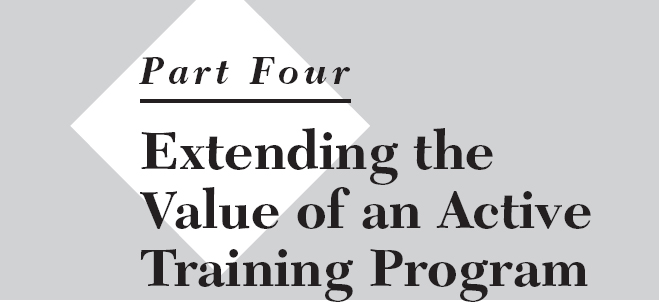
No formal training program, by itself, can lead to long-lasting learning and change. It takes more than the completion of a training program, even one that contains all the features described in this book, for participants to truly acquire knowledge and skill or to change from previous patterns of behavior. Really effective training may provide a solid start in a process of learning and change, but it doesn't represent its end. What follows after the training program is over is critical to the success of that program.
Here are just a few of all too common events that occur that can undermine an active training program:
- The skills learned in the training program are not applied and practiced back on the job.
- The values taught in the training program are not reinforced by the organization in which participants work.
- Ongoing mentoring, coaching, modeling, or even just support and encouragement from managers and co-workers are lacking.
In Part IV of Active Training, we will examine how serious training requires steps that extend its value beyond the actual program. As we will see, some of these steps need to begin before the training actually starts and during the training program itself. The remaining steps need to occur both at the end of the training program and for several weeks and months thereafter. If a training program is to achieve real results, everyone involved—participants, ...
Get Active Training: A Handbook of Techniques, Designs, Case Examples, and Tips, 4th Edition now with the O’Reilly learning platform.
O’Reilly members experience books, live events, courses curated by job role, and more from O’Reilly and nearly 200 top publishers.

